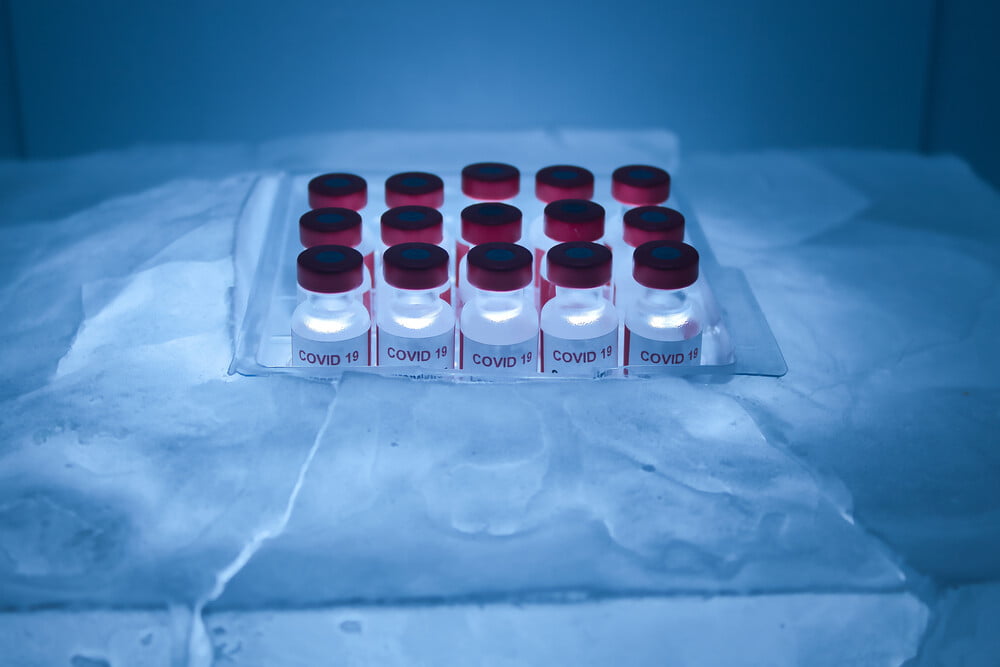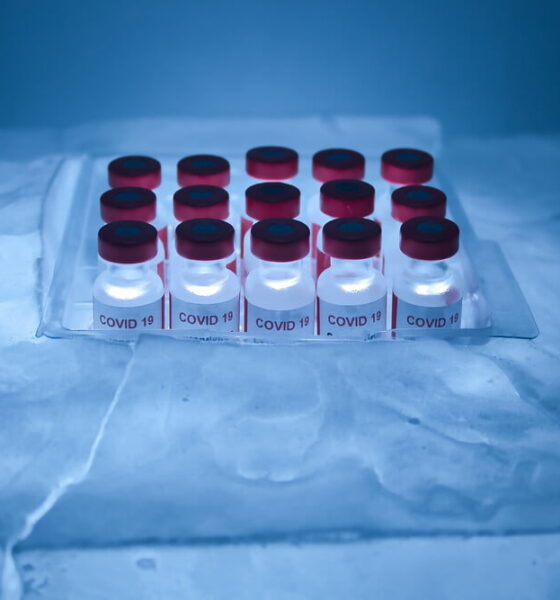

Environment
Eco-Friendly Vaccine Temperature Monitoring & Safety Guidance
Sustainability is playing greater role in many aspects of our lives. One of the areas where sustainability has become particularly important is healthcare.
The Green Business Bureau has talked about some of the different ways that healthcare facilities can become eco-friendlier. Most of their advice has centered around the benefits of introducing new sustainability models to hospitals and clinics. However, there are other healthcare institutions that can also shift towards eco-friendlier business models.
One area that might warrant a newer, more sustainable approach is the supply chain management system for vaccines and other medical supplies. However, an eco-friendly supply-chain model would have to be implemented in a way that doesn’t threaten the safety of the goods and services being distributed.
Taking an Eco-Friendly Approach to Vaccine Supply-Chain Management Without Threatening Safety
We could potentially switch to a vaccine distribution system that relies on renewable energy to keep them cool. However, it is important to understand the nature of vaccine storage requirements before implementing such a system.
All vaccines must be maintained within a specific temperature range prescribed for their storage and transportation to protect efficacy and safety. For decades, cold chains, which are temperature-assured supply chains, have been used to facilitate the sensitive process of manufacturing, storing, and shipping vaccines.
The vaccine cold chain must be agile, resilient, and versatile to overcome logistical headaches, such as time delays, equipment failures, and deviations from standards. That’s why vaccine manufacturers and distributors must monitor essential environmental data throughout the lifecycle of the vaccine, from research to manufacturing to delivery. Any attempt to shift towards an eco-friendly supply-chain model must take all of this into consideration.
Enter vaccine temperature monitoring, which involves the continuous collection and logging of temperature data of the vaccine throughout the cold chain. The main objective of this practice is to ensure consistency in temperature conditions, thereby effectively detecting and preventing harmful deviations.
As per the WHO, an excursion occurs when a vaccine has been exposed to temperatures out of its prescribed range. The consequences of these excursions can be dire, especially when millions of lives and community health are at risk.
According to one study done by United Parcel Service (UPS) and market research agency TNS, nearly a third of pharmaceutical shipments reach their destination spoiled or damaged. What’s more, the WHO says more than half of the global vaccine deliveries go to waste, typically due to temperature excursions and cold chain logistics problems.
One thing is clear: keeping vaccines safe isn’t an easy assignment. It takes a rock-solid cold chain to produce, transport, manage, and store these temperature-sensitive, life-saving products. This can complicate efforts to shift towards a cold chain storage approach that relies on renewable energy.
How are vaccines kept safe?
To answer this question, we will explore the nitty-gritty of vaccine temperature monitoring. We’ll cover why it is essential and how implementing a robust monitoring system can help protect vaccines and valuable assets.
Spotlight on Vaccine Temperature Monitoring
No matter where the vaccines are in the cold chain process, they must be kept within a specific safe temperature range, which traditionally sits between +2°C and +8°C. However, the specific safe temperature range can vary from one vaccine to the next.
For instance, the Pfizer/BioNTech Covid-19 vaccine must be kept in specialized freezers at ultra-cold storage temperatures of -70°C (-94°F). The FDA has since revised the guidelines, requiring the vaccine to be store in a freezer at temperatures between -25°C and -15°C for up to 14 days. If the freezer gets too hot, the fragile ingredients will degrade and render the vaccine unsafe (in other words, spoiled).
How does one guarantee that vaccine temperatures are always within the desired range?
That’s precisely where vaccine temperature monitoring comes into the picture. It entails the continuous process of measuring, recording, and documenting the vaccine temperature throughout the cold chain.
Monitoring critical vaccine data kicks in when the vaccine is being manufactured and ends at the administration point. For this, vaccine makers and distributors must implement an end-to-end tracking system that often includes a series of data loggers interfaced with cloud-based environmental monitoring software. It is a complex process in which many things could go wrong.
Breakage of the cold chain — due to faulty equipment, temperature excursions, or other logistical issues — can hurt the quality and efficacy of the vaccines. According to the IQVIA Institute for Human Data Science, the pharmaceutical industry loses around $35 billion annually because of cold chain breaches.
As more countries across the globe continue to vaccinate their citizens against Covid-19, that figure has gone up significantly. This is not so surprising considering that most of the approved Covid-19 vaccines must be kept at ultra-freezing temperatures during shipping and storage.
While over 5 billion Covid-19 shots have already been administered, billions of vaccine doses are still required to inoculate the rest of the global population. That said, any losses due to vaccine cold chain logistics issues will result in undue delays of distribution. Of course, this will have adverse an health and social impact on communities across the world.
Vaccine wastage affects pharmacies, hospitals, and health departments the most. For one, they will need to dedicate more money and resources to managing the disposal of spoiled vaccines. Of course, these organizations must also make new orders, resulting in additional inventory management, procurement, and reporting.
For vaccine distributors, the cost and challenge can be even more enormous because monitoring solutions and thermal packaging used to ensure temperature consistency are usually not provided by pharmaceutical companies. Clearly, the costs of poor vaccine temperature controls can be staggering.
Fine-tuning the Vaccine Cold Chain for Optimal Vaccine Safety While Also Being Eco-Friendly
To overcome the challenges mentioned above, industry players use several best practices to build fail-proof and robust vaccine temperature monitoring systems. They could also help use energy more efficiently, which would make the supply-chain eco-friendlier.
– Leveraging the power of the Internet of Things (IoT)
One of the best ways industry players are supercharging their vaccine cold chains is by integrating wireless communication technologies to provide greater visibility into vaccine status. When it comes to the latest technologies, digital data loggers (DDLs) integrated with IoT networks are being fitted to vaccine shipments to continuously monitor essential data along the cold chain.
These DDLs with state-of-the-art sensors don’t only improve cold chain monitoring and visibility. Vaccine manufacturers and distributors can also leverage them to spot weak links in the vaccine cold chain. For instance, data logged by IoT devices can identify locations on the supply chain where temperature excursions often occur. More than that, they can pinpoint the personnel, equipment, or process responsible for the excursion.
There are a variety of ways that this could help make the system eco-friendlier. It would help reduce the amount of fuel wasted on transportation and reduce the amount of vaccines that went bad, which would reduce the environmental footprint of manufacturing.
– Moving to the Cloud
Data loggers equipped with IoT sensors are also being connected to cloud-based vaccine monitoring systems. These devices send data on vaccine status directly to the cloud, allowing personnel to view, analyze, and act upon this information in real-time. Cloud-based monitoring improves operational efficiency and allows personnel to identify logistics problems before they cause adverse damage.
This would also reduce the environmental footprint of vaccine waste. The cloud is also more energy efficient than many other data storage options, which would further lower the carbon footprint.
– Optimizing Alarm Capabilities
Cloud-based, IoT-based vaccine temperature monitoring systems can be configured to serve as alarms. Customizable options include the capability to send out various types of alerts via email, automated phone calls, or SMS text. The system can also send alerts to different departments based on the kind of issue detected, thus helping to minimize chances of alarm fatigue.
– Training Staff for the Vaccine Supply Chain 4.0
The pharmaceutical and healthcare industry must also establish thorough training and education protocols to ensure optimal vaccine temperature monitoring. Any personnel involved in handling the vaccines must have a thorough understanding of what their job functions entail.
There Are Potential Ways to Make Vaccine Distribution Eco-Friendlier Without Compromising Safety
Access to safe vaccines has become a hot-button topic for global institutions and governments. This is certainly a critical factor when it comes to ending the global Covid-19 pandemic. With IoT-based digital data loggers, vaccine manufacturers, distributors, and other stakeholders can cost-effectively monitor vaccine temperature and gain greater visibility into their supply chains.
These new changes could potentially lead to an eco-friendlier supply-chain model. It might help lower the carbon footprint of energy use of transpiration and vaccine storage.






























